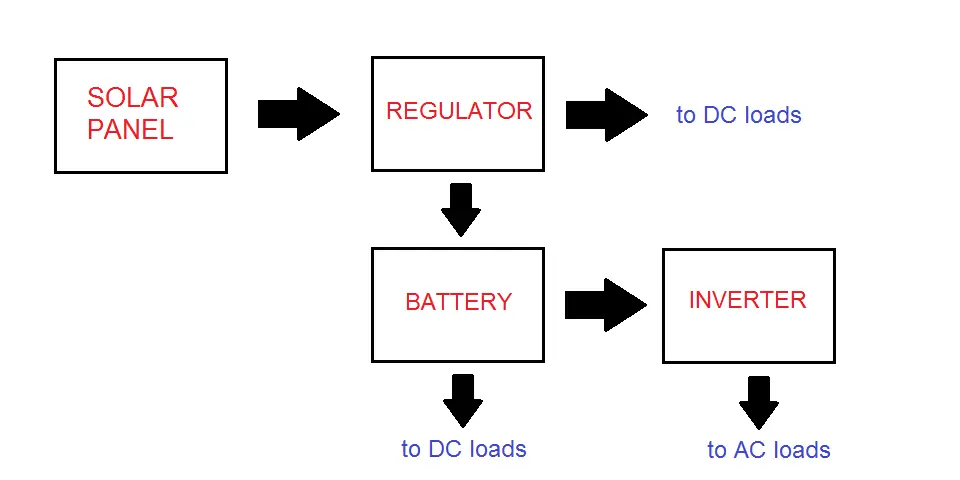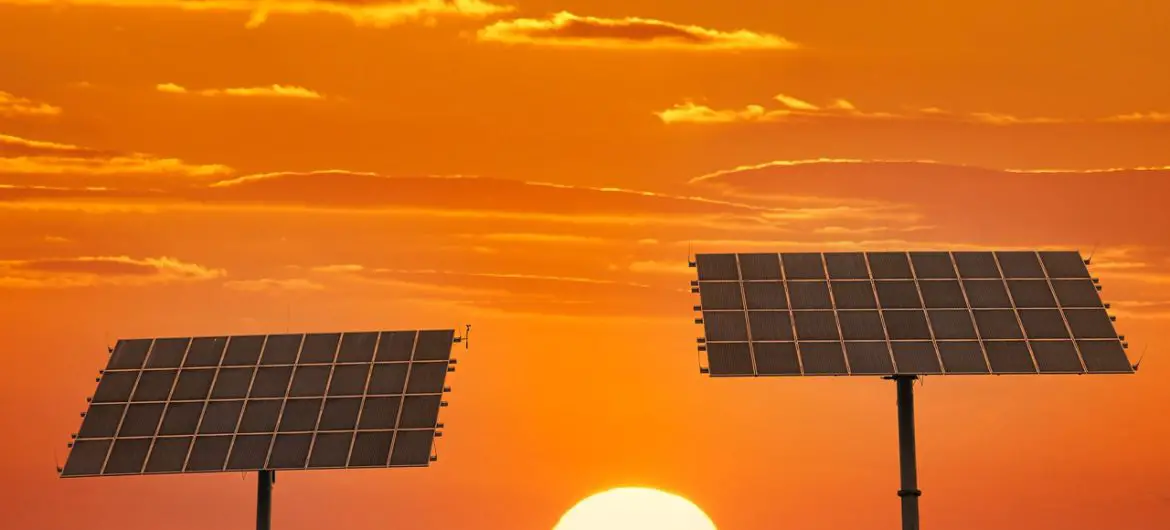Rechargeable batteries are essential in portable electronics like smartphones, smartwatches, flashlights, radios and much more, as they can be recharged multiple times without having to replace them.
Lithium Batteries are a type of rechargeable battery used in many portable electronics.
When Lithium batteries lose their charge, they need to be ‘recharged’ using dedicated chargers. However, the sun provides us with free clean energy that can be used to power devices via Solar Panels.
Can you charge a Lithium battery with a solar panel?
Yes, you can charge a Lithium battery with a solar panel, but it is not recommended to connect a solar panel directly to a lithium battery as they can be damaged from overcharge. Also, lithium batteries require a special process of charging which will need to be followed if you are using a solar panel to charge it.
This article will take a deeper look at Lithium batteries and what is required to charge them using a solar panel.
Deeper look at a lithium battery and solar panels
To understand the question at hand, it will first help to take a closer look at the lithium battery and the process of charging them (I will keep it brief).
Rather than going through unwanted information about the battery, I will cover its key characteristics
Lithium Ion batteries
While there are many different types of Lithium batteries, the most common of them is the Lithium Ion. So this article shall concentrate on this particular type to see if it is possible to charge it with a solar panel.
Most (if not all) batteries are given their name because of the type of chemical composition they are made of. In this case, the battery uses lithium ions.
During the discharge cycle, the lithium ions move from the negative terminal (cathode), through an electrolyte to the positive terminal (anode).
Different types of Lithium Ion Batteries
Lithium Ion batteries come in a variety of shapes for different applications.
- Small cylindrical (single cell with, solid body, with no terminals)
- Large cylindrical (single cell,solid body, with threaded terminals)
- Flat or pouch (soft, flat body)
- Rigid plastic case (large threaded terminals)
Other key characteristics of Lithium Ion batteries are their Nominal voltage and Current Capacity.
Nominal Voltage: This is the normal voltage that the battery operates at. Some batteries might have a higher voltage at full charge, however, this value will soon drop down to its nominal voltage after a predetermined amount of time.
All the packages above come with a nominal voltage of 3.7 volts. However, cells can be connected in series to generate larger voltages.
For example, three lithium-ion cells can be connected in series to give a voltage of 11.1 volts, or four cells can be connected to give a voltage of 14.8 and so on.
Current capacity: Is the amount of current that the battery is capable of storing. It is usually given in Amp-hours (Ah) or Milliamp-Hours (mAh).
Lithium-Ion batteries come in a range of current capacities ranging from as low as 40 mAh all the way to 2.6 Ah.
To increase the current capacity further, batteries are connected in parallel. However, this is a bit more of a complicated process as the internal impedance of each battery needs to be matched.
What is the process involved to charge a Lithium Battery
The Lithium-Ion is a special kind of battery compared to other batteries of different chemistries. This type of battery has strict requirements when it comes to charging it.
The battery charger is a voltage limiting device with some differences to other chargers.
The key differences include;
- Higher voltage per cell
- Tighter voltage tolerances
- Absence of trickle or float charging
Trickle charging is when a battery charger is able to charge a fully charged battery at a rate equal to its self-discharge rate, which allows the battery to maintain its full charge level.
A lithium-ion battery charger does not offer trickle charging because the battery cannot accept overcharge. The battery can become unstable if charged above its nominal voltage which could result in permanent damage.
Damage can result in the form of an explosion!
The charger comes with strict settings that adhere to the restrictions that come with charging this type of battery which will include features such as an end-of-charge detection circuit to monitor when the battery is fully charged.
What is a solar panel?
Now, let’s take a closer look at the solar panel.
Solar panels are increasing in popularity, and becoming the go to for providing a means of free, clean renewable energy to homes, business, and much more.
They work in conjunction with the awesome powers provided by the sun, which is the biggest source of solar energy in our galaxy, the milky way.
Solar panels are panels that convert light (solar energy) from the sun into electricity which can be used to power electrical and electronic equipment.
They come in a variety of sizes and power outputs depending on the needs of the application it will be used for.
Connecting a solar panel directly to a load
So, these awesome panels have the ability to provide power to electrical and electronic devices. But, is it possible to connect them directly to a load?
Connecting a solar panel directly to a load is not the most ideal option as there are a few drawbacks;
- The load will be unable to draw the maximum power at any given instant from the solar panel
- The solar panel could be overloaded due to the demands of the load
- It might be a cloudy day, and the sun might pop in and out which means you won’t have a steady stream of power (so they are weather dependant)
A better option would be to store the energy produced by the solar panel in a rechargeable battery where the load can then draw power from.
How do you charge a battery with a solar panel?
Solar panels are rarely used by themselves to charge a battery. They will be one of a few components used in what is known as a Solar Power System.
The solar power system can then be used to power electrical and electronic loads.
Components of a solar power system include;
- Solar Panel(s)
- Charge Controller
- Rechargeable battery
- Inverter (AC applications)

Let’s take a look at each component and what job it has in the overall system.
Solar Panel – has the task of converting sunlight into electricity.
Charge Controller – the current produced by the solar panel is fed into the charge controller. The controller regulates the current produced by the solar panel to protect the batteries from overcharging.
The controller can detect when the battery is fully charged and can stop, or limit the current (trickle charge) received by the battery.
They also have the job of protecting the solar panel from reverse current (current being fed back into the solar panel from the batteries) when there is no sunlight. This can also lead to the battery losing unwanted charge.
Rechargeable battery – rechargeable batteries are where the power generated by the solar panels is stored. They come in a variety of shapes, sizes, chemical compositions, voltages, and current capacities.
Inverter – The current produced by a solar panel is normally a Direct Current (DC). However, solar panels are used in many settings where Alternating Current (AC) is required. An inverter has the capability of converting this DC current to an AC current.
Can you charge a Lithium battery with a solar panel?
Yes, you can charge a lithium battery with a solar panel (this is assuming that the solar panel has the right output power requirements to charge the battery).
However, there are some issues to consider before doing so.
The first major one being overcharging. We learnt earlier that lithium batteries (especially the Lithium Ion variety) are easily damaged when they are charged above their nominal voltage.
For this reason, lithium battery chargers do not have trickle charging. The charger is designed specifically to stop charging the battery when it has reached its ideal voltage.
Connecting a solar panel directly to a lithium battery is not an ideal scenario, as the solar panel has no means of knowing when to stop providing power to the battery.
It will constantly be feeding energy to the battery (as long as there is sunlight) which will lead to overcharging and damage to the battery.
Other issues include what we discussed earlier in the section about connecting a solar panel directly to a load which include;
- The lithium battery not being able to draw maximum power from the solar panel
- Solar panel being overloaded
- Charging the lithium battery is dependant on the weather (cloudy days are not ideal)
What is needed to charge a Lithium Battery with a solar panel?
While there are some issues when it comes to charging a lithium battery with a solar panel, all is not lost! There is a way to work around these issues.
So what is needed to charge a lithium battery with a solar panel?
You will need the same components we saw earlier in the section ‘how to charge a battery with a solar panel’. In this instance we have a solar panel, and a rechargeable battery. So all that is required is a charge controller.
The charge controller will take care of the main issue of the lithium battery being overcharged. It will also provide a constant current to charge the battery, and protect the solar panel from any reverse current.
However, a note has to be made. Since there are many different types of batteries, there will also be many different types of solar charge controllers to meet the individual needs of each type of battery.
So, you will need to buy a solar charge controller designed for lithium batteries so that it will stop charging the battery when the nominal voltage is reached.





